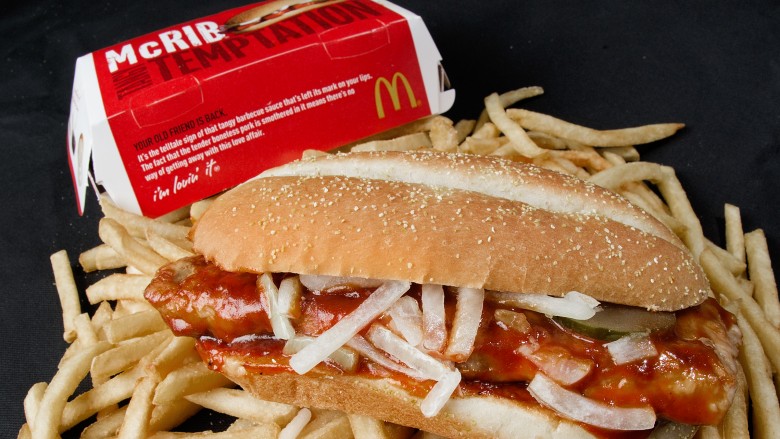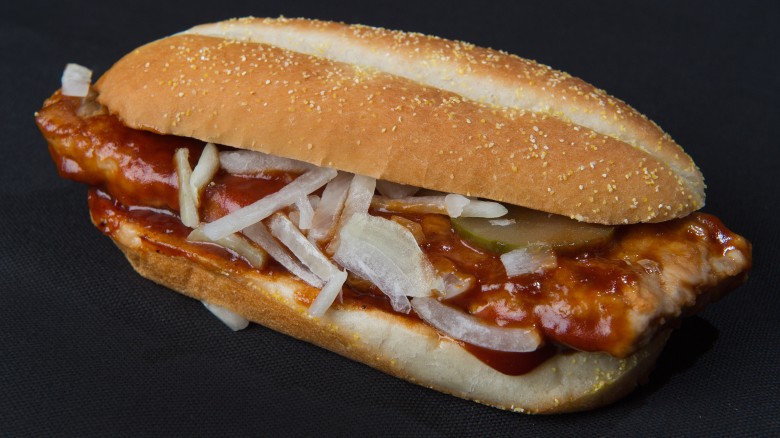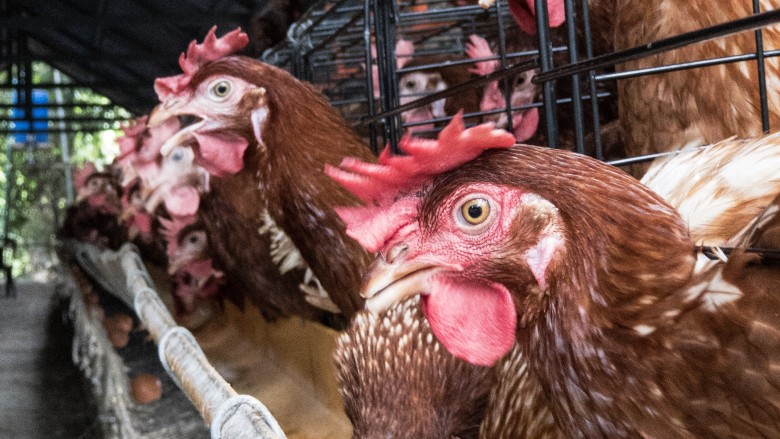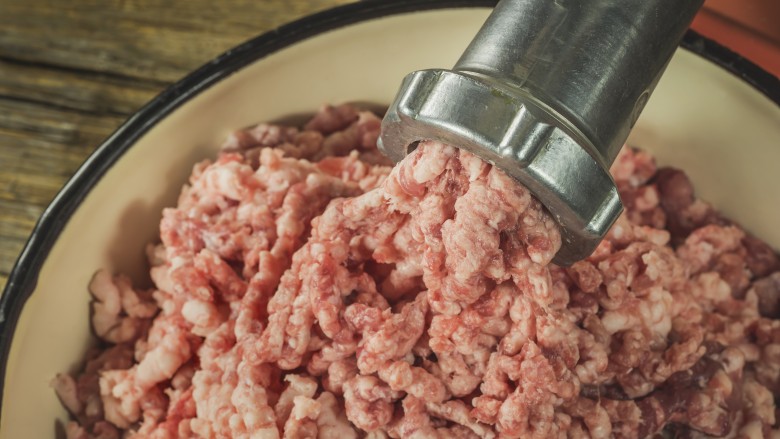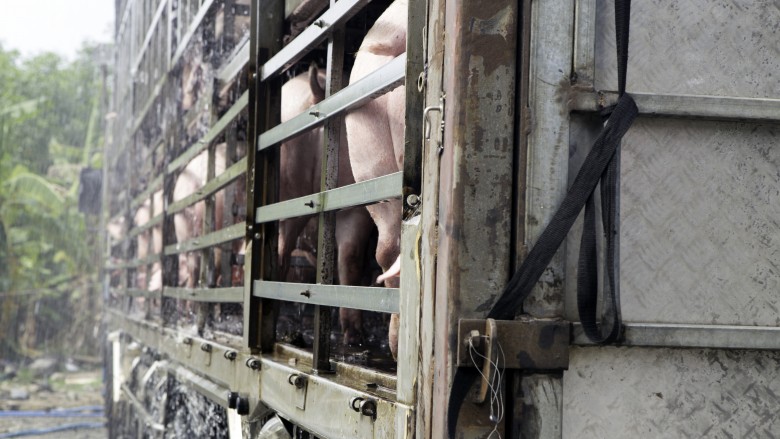What You Didn't Know About The McDonald's McRib
McDonald's McRib sandwich has gained the status of cult icon in our collective food lexicon. With its elongated bun, boneless pork patty made to look like a rack of ribs, and unabashed sauciness, it has appeared and disappeared over the years, creating the illusion of elusiveness. When and where will it turn up next? Late-night television host Stephen Colbert famously defended the "great American mystery," saying "there's nothing wrong with the McRib, just because it appears to be made out of sickly E.T." And indeed, the allure of the McRib is a mystery.
Like most suburban teenagers in the '90s who frequented McDonald's in the absence of anything better — and as a result my perpetually broke state of being — I am familiar with the comings and goings of the McRib. But then I moved to a big city for college, eventually ate at some upscale restaurants, shopped at local greenmarkets, and learned how to cook for myself, after which point there was no going back to the McRib. What lies behind the curtain of highly processed fast foods like the McRib is too discomforting to accept.
While you won't find much information about the Southern barbecue-inspired McRib on the McDonald's website, you can still discover a few more disturbing tidbits about the Franken-sandwich if you look hard enough. I wonder why McDonald's doesn't want us to know very much about its beloved sandwich of fake ribs.
The iconic sandwich is over 30 years old
McDonald's grotesque-yet-popular McRib sandwich made its debut in 1982 and was around until 1985 before disappearing and becoming a pop-up sensation whenever and wherever. Since the early '80s, the ubiquitous fast food chain has turned the limited availability of the sandwich into the McRib's best selling point. To capitalize on the McRib's broad but inexplicable appeal, McDonald's has made it a point to encourage the allure. You can even check out the fan-driven McRib locator if you're desperate.
The McRib contains a whopping 70 ingredients
According to Time magazine, the McRib shouldn't exactly be considered a health food. Red flag? The saucy red pork sandwich looks like it uses about 5 ingredients total but actually contains 70 ingredients — 34 of which can be found in just the bun. Realistically, this is par for the course as processed foods and fast foods go, but this is one of the reasons these things are bad for us.
The McRib was born as a response to a chicken shortage
McDonald's came up with the idea for the McRib as a response to a chicken shortage brought on by the popularity of its McNuggets. As franchises tried to fill the demand for the nuggets, the chicken supply became strained. The only solution was to start using pork and invent a new addictive fast food product full of additives! And McDonald's rose to the challenge.
It takes 45 minutes to process meat into a McRib patty
In case you were under the impression that meat for the McRib goes through a meticulous and thoughtful process before materializing in your nearest McDonald's, let me burst that bubble. First off, this pork certainly isn't coming off a rib of any kind. According to ABC News, pork shoulder meat is chopped, seasoned with preservatives, molded to get that attractive fake rib appearance in a big plant, and flash-frozen — a down-and-dirty process that takes about 45 minutes. Yummy cryogenics.
The Flintstones movie was responsible for bringing back the McRib
After being taken off the McDonald's menu in 1985, the McRib returned to national consciousness with the opening of the Flintstones movie in 1994. As a movie tie-in, the rib-shaped food product gained in popularity, making it a cult favorite that returns every now and again to great praise.
The McRib is the result of a science experiment
The McRib is the opposite of the more recent movement to eat real food. Instead, it's more of a science experiment — exactly what you want to hear about your food, right? The pork patty is considered a "restructured" meat product invented by Roger Mandigo, a University of Nebraska animal science professor. According to NPR, the professor extracted protein from the pigs' muscles to use as a kind of emulsifier or binding agent. While Mandigo didn't invent the McRib per se, his technology allowed McDonald's to bind meat parts and reshape them into a patty that resembles a pork chop with bones. In 1995, Mandigo and two other writers describe the process of making restructured meats, which are "commonly manufactured by using lower-valued meat trimmings reduced in size by comminution (flaking, chunking, grinding, chopping or slicing)" and then mixed with salt and water to make a glue. I don't know about you, but I don't find the notion of eating various bits of cheap meat particularly appetizing.
A McDonald's pork supplier was sued for animal abuse
As scary as the ingredients for the McRib are and as terrifying as their processing practices sound, the animal abuse allegations against a McDonald's pork supplier make me shudder. Smithfield Farms provides pork for the McRib as well as other McDonald pork products. In 2010, The Humane Society of the United States (HSUS) alleged that pigs at Smithfield Farms lived in cruel and unusual conditions that included gestation crates that caused the animals to develop "open pressure sores." HSUS went on to file a lawsuit against the pork supplier, and McDonald's eventually committed to reducing the use of gestation crates.
Whether you consider the McRib a must-get when it rolls into your town or a disgrace to real food, you're better off knowing what you're getting into. As for me, I'm as finished with my teenage angst as I am with eating cheap sandwiches made with restructured meats.

